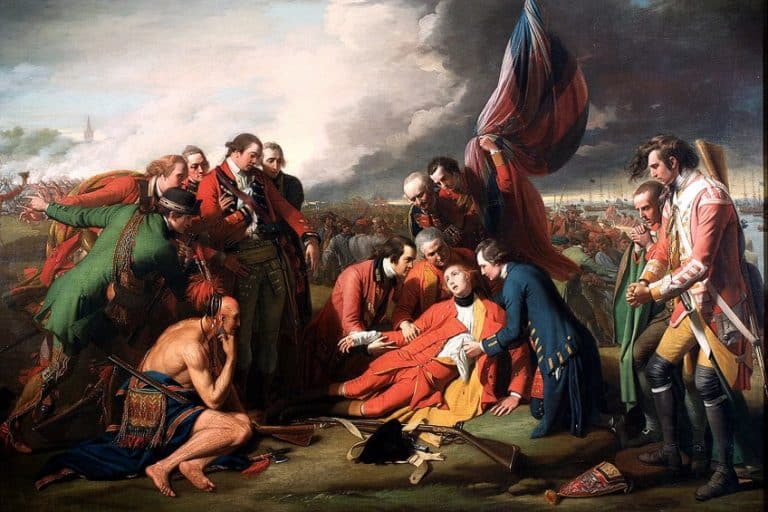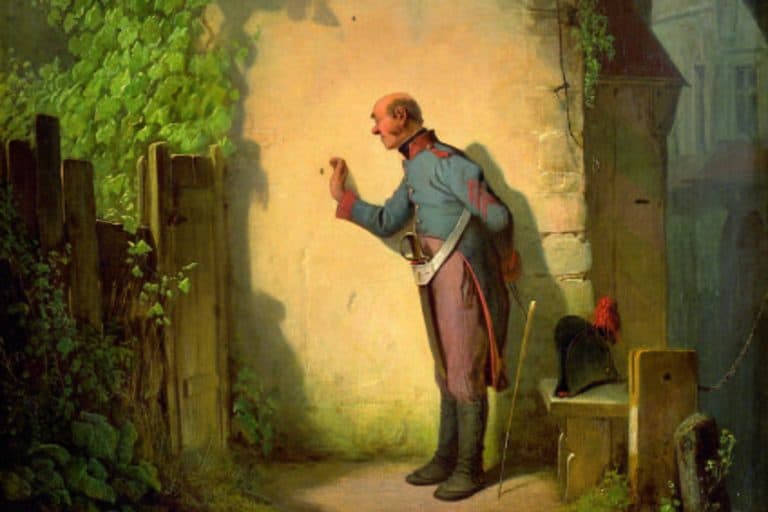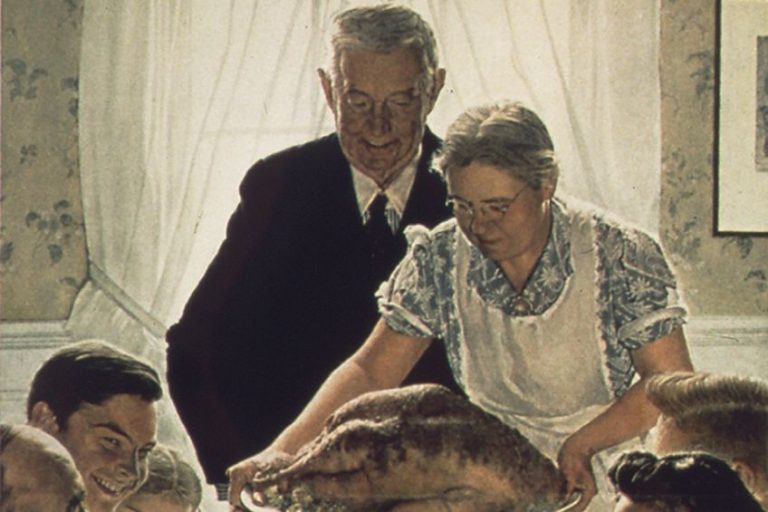Thomas Cole – Exploring Thomas Cole’s Paintings
Thomas Cole’s artworks are a testament to the fears and hopes of the emerging American state during the mid-19th century, in addition to the joyful tributes to its natural environment. Originally from the northwest of England and having moved to America in his youth, Thomas Cole’s paintings served to depict the majesty of the American wilderness that he experienced there. If you are keen to learn more about Thomas Cole’s biography and art, then look no further!
Thomas Cole’s Biography
| Artist Name | Thomas Cole |
| Nationality | British-American |
| Date of Birth | 1 February 1801 |
| Date of Death | 11 February 1848 |
| Place of Birth | Bolton-le-Moors, United Kingdom |
Thomas Cole is acknowledged as the very first painter to introduce a European Romantic landscape artist’s perspective to those landscapes, in addition to a figure whose ideals and religious sensibilities reflected a uniquely American attitude. Moreover, given his background in England – or perhaps because of it – his artwork continues to appeal to the public as an exemplar of that ethos in the present day. No American artist had ever incorporated the themes and methods of the Romantic landscape art of the Europeans into the landscape artworks depicting North America until Cole.

Childhood and Education
Thomas Cole was the fifth of nine children born in Lancashire, England, in 1801. His father was a textile producer, and the household was financially unstable. Cole’s family relocated to North America without him when he was six years of age and settled in Ohio. He obtained little formal schooling in his youth, but he was an ardent reader who taught himself about literature and art. He also spent a great deal of time painting and drawing, and he had a natural aptitude for art from an early age. He undertook an apprenticeship at a printing company in Chorley at the age of 14 where he learned how to etch images for calico fabric, and a stint of employment producing engravings in Liverpool in 1817.
He grew up with a passion for the outdoors and would frequently go on hikes with his sister to enjoy the outdoor scenery of northern England.
Early Training
Following a short journey to the West Indies in 1819, Thomas Cole relocated to Ohio to be with his family and to work in his father’s wallpaper company. It was at this point that he started to study painting and was contracted to produce several landscapes and portraits. In 1823, he traveled back to Philadelphia to pursue art at the Pennsylvania Academy of Fine Arts. He arrived in New York a few years later, prepared to pursue a proper artistic career; once established in the city, he started to take excursions down the Hudson River Valley to portray the American countryside.
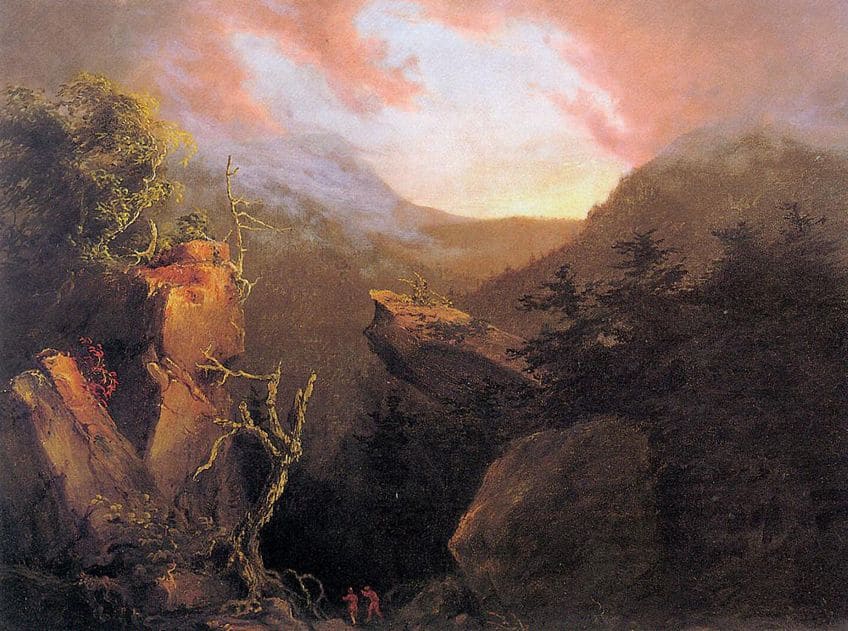
The youthful artist had an instantaneous feeling of connectivity with the local landscape, that he would carry with him for the remainder of his life. His artwork from this moment forward became the foundation for the Hudson River School style of Romantic landscapes. He intended that his representations of the Catskills mountains may provide his audience “a delightful tiny taste of paradise”. Yet, he was no fool when it came to the environmental hazards that lurked in this exquisite landscape: even on his earliest journeys up the Hudson, he would have seen indications of enterprise – tanneries, sawmills, burned-over fields – amongst all the beauty.
Mature Period
His career began to take off when he sold canvases to several of the most significant painters of the day, John Trumbull and Asher Brown Durand, in addition to the prominent author and scholar William Dunlap, in 1825. Thomas Cole was selected to join the National Academy of Design the next year, where he frequently displayed his works at exhibitions. Thomas Cole’s cultural heritage was European, like that of other white American painters of the time, and he believed it was important to examine the old masters of the Classic and Renaissance periods to improve his technique.
Therefore, in the summer of 1829, he departed on an extensive tour across Europe, including a stopover at Niagara Falls. Cole described it like this: “I can’t possibly imagine traveling to Europe without actually seeing them. I’d want to take a final lingering glimpse at our natural environment. I should try to impress its characteristics on my consciousness so vividly that, even in the presence of other countries’ magnificent landscapes, their great and exquisite uniqueness will not be lost”.
By the time of his journey, Thomas Cole’s name as a landscape artist was already fully established in his adoptive nation, to the degree that his acquaintance, William Cullen Bryant, penned a verse in celebration of him just prior to his departure.
His friend reminded him not to forget the New World’s beauty among the marvels of European art history in the poem. Cole learned a great deal during his European tour, and he encountered the British Romantic landscape artists J.M.W. Turner and John Constable, along with Thomas Lawrence. Turner’s cityscapes, according to art scholar Matthew Baigell, affected the structure of Thomas Cole’s paintings such as the Course of Empire (1936) series. While overseas, he also took part in a variety of exhibits. Interestingly, although he was regarded as a progressive artist in the United States, he was reluctant to accept a number of the more extreme stylistic advances apparent in the works of his English contemporaries, specifically Turner, whom he considered paid far too much focus on sensations of light and color.

He most relished his trip to Italy, remarking, “I am not shocked that the Italian artists have portrayed so magnificently as they have: Nature dressed in cosmic garb was their tutor. His return in 1832 from Europe marked the beginning of a significant period in both his creative personal and professional life. In 1833, he encountered his eventual patron, Luman Reed, for whom he started working on The Course of the Empire (1836), a renowned series of artworks.
That year, he wed Maria Bartow, the niece of a farm landowner who rented Cole a workshop in Catskill, New York while he concentrated on the series. Thomas Cole’s artworks were inspired by the nearby landscapes when the newlyweds chose to settle permanently in Catskill. He penned his important and powerful Essay on American Scenery there in 1835, wherein he discusses the danger that industrialization continues to pose to the natural world.
Late Period
Thomas Cole’s final years were characterized by reflection and recurrent sorrow. He was incredibly concerned by the relentless march of industrialization and urbanization which seemed to undermine the American wilderness; he is reported to have hated cities, feeling “a premonition of wickedness in them. However, Thomas Cole’s paintings of landscapes, although still capturing the terrain, appeared to serve as platforms for him to explore problems such as history and time as in his Voyage of Life (1842) series.
He joined the Episcopal Church when he moved to New York a year later, and Christianity became a progressively essential element of his lifestyle from then on.
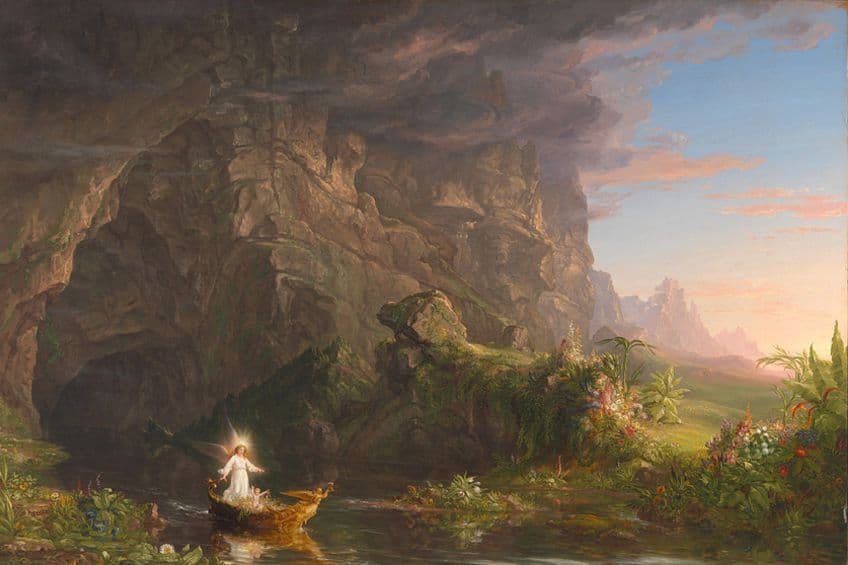
“Art, in its ultimate sense, is, in reality, man’s poor copy of the Almighty’s creative genius,” he stated of spirituality’s influence on art. In 1844, he consented to accept Frederic Edwin Church as a student. This was a lucky choice since Cole’s influence on the young artist’s work would ensure the longevity of the Hudson River School and, in particular, the longevity of Thomas Cole’s artworks. He returned to Niagara Falls in the summer of 1847, maybe seeking another glimpse of pristine nature. This was to be his final long journey; he passed away the following February aged 47. “Thomas Cole’s paintings are of such a quality that calling them acts of faith scarcely surpasses the appropriate use of language,” stated Cole’s friend and author William Cullen Bryant in a memorial delivered upon his passing.
Thomas Cole’s Paintings
Thomas Cole’s artworks influenced the style of the Hudson School and had a long-lasting impact on American paintings. Thomas Cole’s paintings are distinguished by their bold use of color and light as well as their painstaking attention to every detail. His artwork inspired many other painters to examine the natural features of the U. S. and contributed to building a distinctly American manner of landscape art.
He is known for his significant publications on art theory and his attempts to encourage the establishment of a nationwide school of art in the United States, as well as his contributions to American art. Here is a list of several of his most renowned artworks.
| Title | Date | Medium | Dimensions (cm) | Location |
| Lake with Dead Trees (Catskill) | 1825 | Oil on canvas | 68 x 85 | Allen Art Museum, Oberlin College, Ohio, United States |
| Expulsion from the Garden of Eden | 1828 | Oil on canvas | 100 x 138 | Collection of Museum of Fine Arts, Boston, Massachusetts, United States |
| The Consummation of Empire | 1836 | Oil on canvas | 129 x 193 | The New-York Historical Society, New York, United States |
| View from Mount Holyoke, Northampton, Massachusetts, after a Thunderstorm | 1836 | Oil on canvas | 130 x 193 | The Metropolitan Museum of Art, New York City, United States |
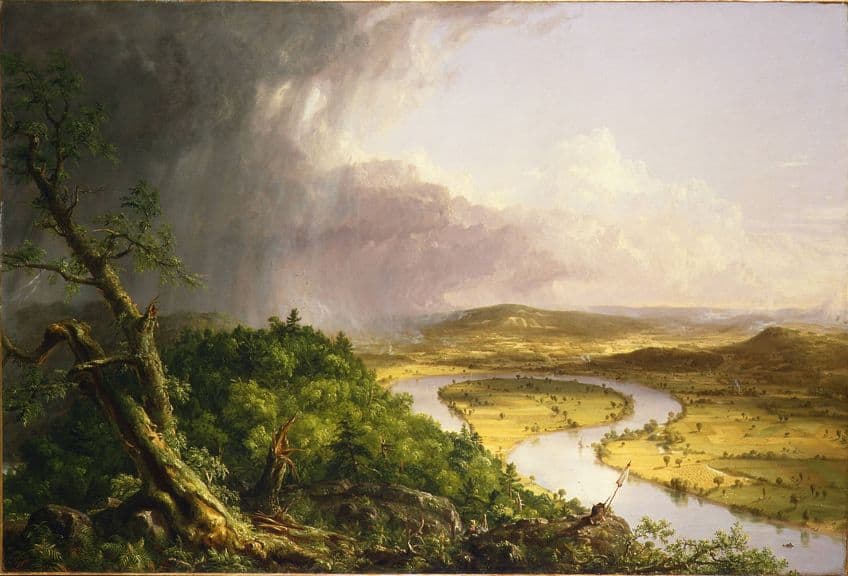
With that, we end our look at Thomas Cole’s biography. Thomas Cole is recognized as the forefather of the Hudson River School, a collection of American painters who attempted to portray the unspoiled grandeur of the American countryside, most notably that of New York State’s Hudson River Valley. From the mid-1820s onward, he was the first artist to examine this region, undertaking steamboat excursions through the valley, and his works became a reference for a new generation of American painters, notably Albert Bierstadt, Frederic Edwin Church, and Asher Brown Durand. Thomas Cole’s paintings, in many respects, encapsulate all of the paradoxes of European settler culture in the United States. He was enthralled by the breathtaking nature of the American landscape and desired to preserve it through his art. However, his very survival in that landscape and the development of his career were dependent on the forces of urbanization and modernity that threatened it.
Frequently Asked Questions
What Was Notable About Thomas Cole’s Artworks?
Thomas Cole is best known for his landscapes, which are distinguished by their striking use of color and light, as well as their precise focus on every detail. Many of Thomas Cole’s works, famed for their sweeping panoramas and powerful compositions, portray the Hudson River Valley and the outlying areas. Thomas Cole’s artworks were frequently big and majestic, with rocky terrain, spectacular clouds, and bright flora. He was most renowned for his use of light in his works, which he employed to create a feeling of movement and dynamism. Cole’s passion for literature and history motivated him to create a number of literary and historical works in addition to his landscapes.
What Was the Hudson River School Most Known For?
The Hudson River School was an American art movement that flourished in the mid-19th century. It is well-known for its landscapes, which were driven by the beautiful nature of the Hudson River Valley and its surroundings. Thomas Cole and other painters were attracted to the region by its gorgeous views and the opportunity to express them in the paintings created by the Hudson River School. The Hudson River School was a key influence on the aesthetic of American landscape art, and had a long-lasting impact on the evolution of American art. Aside from its prominent publications on art theory, the Hudson River School movement is known for its initiatives to support the establishment of a national school of art in the United States.
What Influenced Thomas Cole’s Paintings?
Thomas Cole was also influenced by European creative traditions, notably by the works of the British painter J.M.W. Turner, and the German painter Caspar David Friedrich. The literary and historical elements that Cole integrated into his works also show how Cole was affected by his passion for significant moments in the past. Cole drew inspiration from his own life experiences and feelings, which he tried to convey in his artwork. Religion and philosophy were two other subjects that Thomas Cole found interesting, and these subjects can be found in several examples of his artwork as well.
Isabella studied at the University of Cape Town in South Africa and graduated with a Bachelor of Arts majoring in English Literature & Language and Psychology. Throughout her undergraduate years, she took Art History as an additional subject and absolutely loved it. Building on from her art history knowledge that began in high school, art has always been a particular area of fascination for her. From learning about artworks previously unknown to her, or sharpening her existing understanding of specific works, the ability to continue learning within this interesting sphere excites her greatly.
Her focal points of interest in art history encompass profiling specific artists and art movements, as it is these areas where she is able to really dig deep into the rich narrative of the art world. Additionally, she particularly enjoys exploring the different artistic styles of the 20th century, as well as the important impact that female artists have had on the development of art history.
Learn more about Isabella Meyer and the Art in Context Team.
Cite this Article
Isabella, Meyer, “Thomas Cole – Exploring Thomas Cole’s Paintings.” Art in Context. June 8, 2023. URL: https://artincontext.org/thomas-cole/
Meyer, I. (2023, 8 June). Thomas Cole – Exploring Thomas Cole’s Paintings. Art in Context. https://artincontext.org/thomas-cole/
Meyer, Isabella. “Thomas Cole – Exploring Thomas Cole’s Paintings.” Art in Context, June 8, 2023. https://artincontext.org/thomas-cole/.



